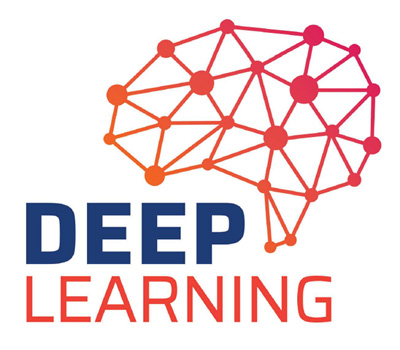- Home /
- Deep Learning
Deep Learning
About Course
- The Deep Learning Specialization provides a pathway for you to take the definitive step in the world of AI by helping you gain the knowledge and skills to level up your career In this Specialization, you will build and train neural network architectures such as Convolutional Neural Networks, Recurrent Neural Networks, LSTMs, Transformers, and learn how to make them better with strategies.
- You will learn the best practices to train and develop test sets and analyze bias/variance for building deep learning applications

What is deep learning
- Deep learning is an artificial intelligence function that imitates the workings of the human brain in processing data and creating patterns for use in decision making
- Deep learning is an AI function that mimics the workings of the human brain in processing data for use in detecting objects, recognizing speech, translating languages, and making decisions.
- Deep learning AI is able to learn without human supervision, drawing from data that is both unstructured and unlabeled.
- Deep learning, a form of machine learning, can be used to help detect fraud or money laundering, among other functions.
What will I learn
- Build and train deep neural networks, identify key architecture parameters, implement vectorized neural networks and deep learning to applications
- Train test sets, analyze variance for DL applications, use standard techniques and optimization algorithms, and build neural networks in TensorFlow
- Build a CNN and apply it to detection and recognition tasks, use neural style transfer to generate art, and apply algorithms to image and video data
- Build and train RNNs, work with NLP and Word Embeddings, and use HuggingFace tokenizers and transformer models to perform NER and Question Answering
Topics
- What is neural network?
- Building Neural Network with Python Programming
- How neural networks works?
- Perceptron
- Gradient descent
- Stochastic Gradient descent
- Feed Forward and Back Propagation
- Batch Gradient Descent and Stochastic Gradient Descent
- Overview of deep learning
- Installing TensorFlow, Keras, Caffe
- TenserFlow Basics
- Placeholders in Tensorflow
- Defining placeholders
- Feeding placeholders with data
- Variables
- Constant
- Self-Organizing Maps
- Computation graph
- View Data with Pylab
- Activation functions
- What are activation functions?
- Sigmoid function
- ReLu -Rectified Linear units
- Softmax function
- Exploring the MNIST dataset
- Defining the hyper parameters
- Model definition
- Building the training loop
- Over-fitting and Under-fitting
- Building Inference
- Introduction to CNN
- Train a simple convolutional neural net
- Pooling layer in CNN
- Building, training and evaluating our first CNN
- Model performance optimization
- What are Recurrent Neural Networks (RNNs)?
- Understanding a Recurrent Neuron in Detail
- Long Short-Term Memory(LSTM)
- Back propagation Through Time(BPTT)
- Implementation of RNN in Keras
- BoltzMann Machines
- AutoEncoders
- Defining the hyper parameters
- Building a simple deep neural network
- Convolution in keras
- Pooling
- Dropout technique
Why ?
- The ability to process large numbers of features makes deep learning very powerful when dealing with unstructured data. Deep Learning is gaining much popularity due to it’s supremacy in terms of accuracy when trained with huge amount of data.
- Deep Learning Packages and Environment
- Training Neural Network for Mnist Dataset
- Convolution Neural Network
- Recurrent Neural Network
- Digit Recognition using CNN
Target Audience
- who want to improve their programming skills by applying industry best practices in their daily work.
- Individuals looking to learn Deep learning
- Project Managers, Software architects and Development Team Leaders, who want to implement or improve a software development process within a project, and who want to define a project or company-wide set of recommended tools and best practices.
- Project Managers, Software architects and Development Team Leaders, who want to implement or improve a software development process within a project, and who want to define a project or company-wide set of recommended tools and best practices.
